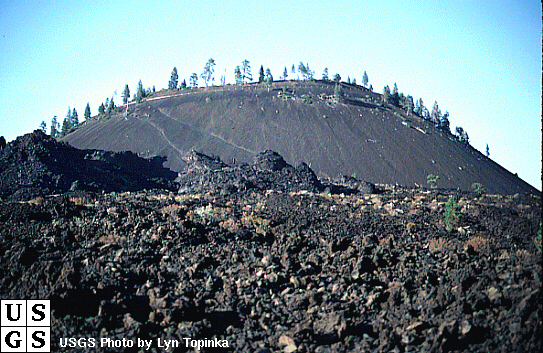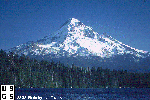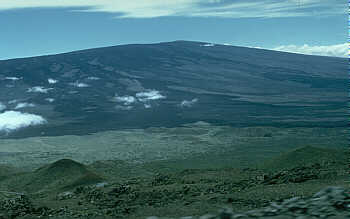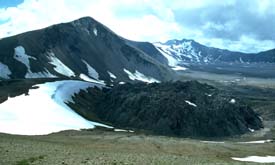 simplest
type of volcano
simplest
type of volcano
The first question you should ask about volcanoes is why do they erupt?
For the most part, volcanoes erupt, and lava is produced, because of gravity. Gravity? Yes, gravity!
Remember that the magma has a lower density than the surrounding rock so it will rise until the rock that is below it has a greater density. You can think of a bubble of air rising through water as an analogy. If, for example, the bubble is carbon dioxide which has a density greater than average air, then the bubble will rise until is leaves the water. Once free it will float above the water's surface, but won't dissipate (unless there's a wind). Magma is the same - it will rise until it reaches a level in the Earth's crust at which it is stable. If it makes it all the way to the surface of the Earth then it will erupt, sometimes violently, as lava. The explosiveness of the eruption is primarily controlled by the magma composition.
The nature of the eruption may change during the eruption owing to a number of factors:
Types:
 As
you can well imagine, the size and shape of the various types of
volcanoes
can vary a great deal. The following diagram, from the US Geological
Survey,
shows the relationship between Mt. Rainier, a composite volcano in the
Cascades to Mauna Loa, on Hawaii. As a side-light, the tallest mountain
in the world, as measured from base to peak is Mauna Loa.
As
you can well imagine, the size and shape of the various types of
volcanoes
can vary a great deal. The following diagram, from the US Geological
Survey,
shows the relationship between Mt. Rainier, a composite volcano in the
Cascades to Mauna Loa, on Hawaii. As a side-light, the tallest mountain
in the world, as measured from base to peak is Mauna Loa.
Several factors determine the shape of the volcano. The most important factor is the composition of the magma
Cinder Cones:
 simplest
type of volcano
simplest
type of volcano
 typically
steep sided (~30-45°), circular
typically
steep sided (~30-45°), circular
 built
almost entirely from lava flows
built
almost entirely from lava flows
 formed
by small volume, viscous eruptions
formed
by small volume, viscous eruptions